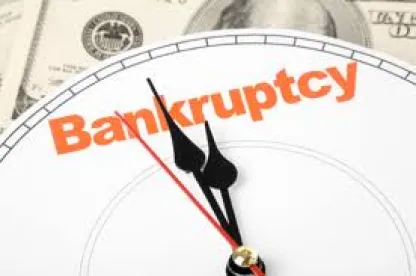Despite recent improvements in India’s economic stability, the hangover from India’s credit fueled boom isn’t over yet. Estimates of the percentage of bank loans that are “impaired” — where repayment of the loan is classified as doubtful — run as high as 9%. Following the global financial crisis in 2008 and 2009, India joined countries around the world in rapidly pumping money into the financial system to prevent a prolonged global recession. The strategy of cheaper and more available money, much of it flowing through India’s banks, succeeded and resulted in the country’s growth. However, overreliance on interest-rate sensitive bank loans, slowing global GDP growth rates, and uncertain domestic economic policies exposed the vulnerabilities of India’s banks. Bad debts and missed loan repayments started to pile up quickly. The consequences of shortcomings in the insolvency process are far-reaching since bad debts can create difficulty in extending new loans even in good economic times.
The Indian government has undertaken some important steps to address the bad debt problem. India’s Finance Ministry within the newly elected Modi administration shifted away from its historical tendency to recapitalize India’s public sector banks with taxpayer money. Instead, it has publicly favored selling equity stakes in public sector banks to private investors in order to repair bank balance sheets. The India’s Reserve Bank (RBI) has also recently instituted requirements that India’s banks replace their traditional ad-hoc approach to resolving non-repayment with a standardized system for classification and information sharing about perennial defaulters. Such measures reflect a growing recognition amongst Indian policymakers that the extent of the bad debt problem can no longer be ignored.
Nevertheless, these measures are not enough. In order to make meaningful strides in settling bad debts, and to prevent their re-occurrence in subsequent economic downturns, policymakers will need to address two key obstacles — chronic backlogs in India’s judicial system and the lack of a cohesive bankruptcy code in India.
India currently has no consistent framework for dealing with bankruptcies. Companies in different industries face varying degrees of legal and government supervision in the liquidation process. In many instances, supervised debt restructuring occurs only when companies face imminent crisis. Further compounding this problem is the fact that court delays in India can cause bankruptcy proceedings to take years. According to a well-publicized report written by current RBI governor Raghuram Rajan, the average time taken to close a business in India is 10 years, compared with 1.7 years in China. This report also highlights abysmally low asset recovery rates in India—12% at the end of a bankruptcy process compared with China’s 36%.
There’s no doubt that the Indian government recognizes that bad debt can impair the country’s long term growth. What remains to be seen is whether the Modi administration will undertake initiatives to create an organized bankruptcy code, one that does not fall victim to India’s judicial backlog. The signs are encouraging. The Bankruptcy Law Reform Committee, a committee recently constituted by the Finance Ministry, released a report recommending drastic changes to current laws and laying out a clear roadmap for implementation. The report uses definitive language to describe the limitations and inconsistencies of the current bankruptcy framework, and its recommendations borrow heavily from best practices in the US, Sweden, and the UK. The report’s proposals, if implemented, could herald a new era in how India’s economy resolves bad debts.



 />i
/>i
